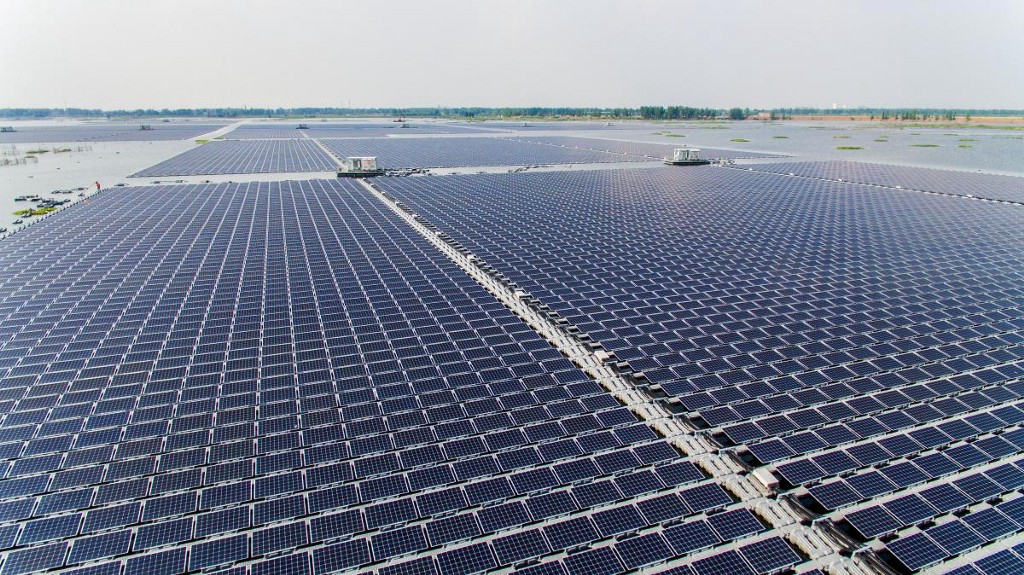The world’s biggest floating solar farm, built atop a former coal mine, generated press as well as electricity when it went online several months ago.
The 40-megawatt farm, built in the coal-rich Chinese city of Huainan, consists of 120,000 photovoltaic panels over 86 hectares, and it generates enough electricity to power 15,000 homes a year.
Looking something like enormous metallic lily pads, the chimeric union of nature and tech is something to behold. The farm was designed to last 25 years, which means that it should still be pumping out electricity through 2042.
By then, China may be facing another problem: the country has more solar capacity than any other country in the world, and it intends to invest at least $361 billion in renewables by 2020. But China has already more than doubled its 2020 solar power target.
Installations like the floating solar farm are dramatically exceeding expectations, producing more than 112 gigawatts and topping the government’s goal of 105 gigawatts by 2020. This has led to a rising curtailment rate, a measure of the amount of power that could have have been generated and used but wasn’t. The country lost 15.5% of potential solar energy in five northwest provinces last year.
And China needs to find space for all of the panels. Its new target of 213 gigawatts by 2020, or five times larger than the current capacity of the U.S., would cover an area of land equivalent to greater London.











